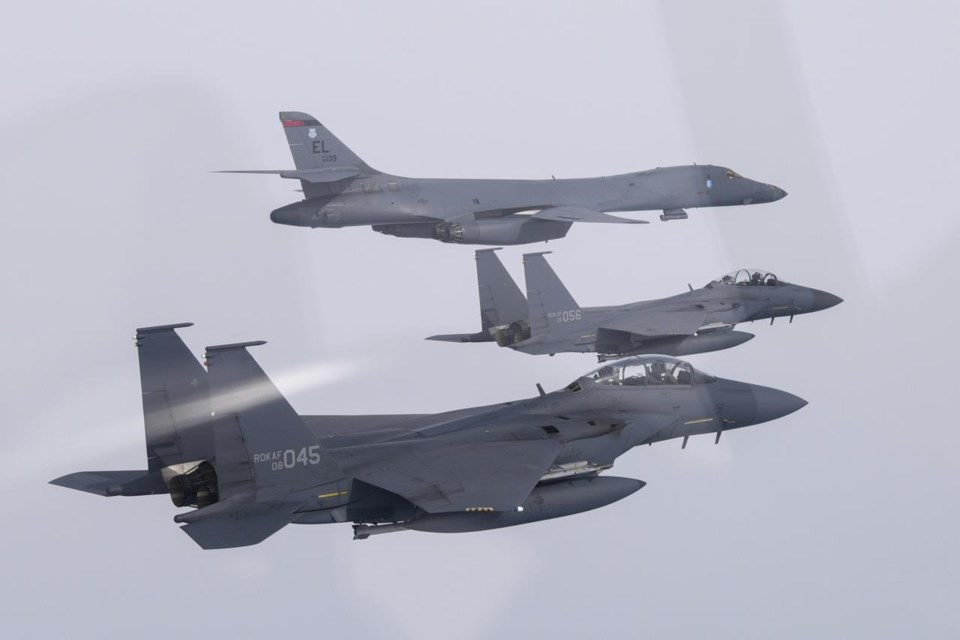SEOUL, South Korea (AP) — The South Korean and U.S. militaries announced Friday they will hold their biggest joint field exercises in five years later this month, as the U.S. flew a long-range B-1B bomber to the Korean Peninsula in a show of force against North Korea.
The North has threatened to take “unprecedently” strong action against such exercises. It’s likely that it will respond to the upcoming training with missile tests because it views it as an invasion rehearsal.
In a joint news conference, the South Korean and U.S. militaries said they will conduct the Freedom Shield exercise, a computer-simulated command post training, from March 13 to 23 to strengthen their defense and response capabilities, and separate large-scale joint field training exercises called Warrior Shield FTX.
Col. Isaac L. Taylor, a spokesperson for the U.S. military, said the field training will include a combined amphibious drill and that their size would return to the scale of the allies’ earlier biggest springtime field exercises called Foal Eagle.
The two countries last conducted Foal Eagle in 2018. They then canceled or downsized some combined drills to support now-stalled diplomacy with North Korea and guard against the COVID-19 pandemic. Recently, however, the two countries have been expanding their joint military exercises in the face of an evolving North Korean nuclear threat.
Friday's deployment of a U.S. B-1B was the aircraft's first such flyover in joint aerial training with South Korean warplanes since Feb. 19. North Korea is highly sensitive to the deployment of B-1Bs, which are capable of carrying a large conventional weapons payload. It responded to the previous flights of multiple B-1Bs by test-launching two short-range missiles the next day.
South Korea’s Defense Ministry said the use of a B-1B demonstrated the U.S. determination and ability to use the full range of its military capabilities, including nuclear, to defend its allies.
North Korea test-fired more than 70 missiles last year, the most ever in a single year, and several more this year. Many of the missiles were nuclear-capable weapons designed to strike the U.S. mainland and South Korea.
North Korea has also threatened to use its nuclear weapons preemptively in potential conflicts with the United States and South Korea. The U.S. military has warned it that the use of nuclear weapons “will result in the end of that regime.”
In January, Defense Secretary Lloyd Austin said the U.S. would also increase its deployment of advanced weapons such as fighter jets and bombers to the Korean Peninsula.
Last month, North Korea’s Foreign Ministry warned that the U.S. and South Korea would face “unprecedentedly persistent and strong counteractions” if they carry out planned military drills this year that the North regards as “preparations for an aggression war.”
Later, Senior North Korean Foreign Ministry official Kwon Jong Gun said the only way to reduce military tensions on the Korean Peninsula is for the United States to reverse its plans to deploy strategic assets in South Korea and halt joint drills with the South. He said if the United States continues its “hostile and provocative practices” against North Korea, it can be regarded as a declaration of war.
North Korea has previously issued similar rhetoric in times of animosity with the United States and South Korea.
Hyung-jin Kim, The Associated Press


